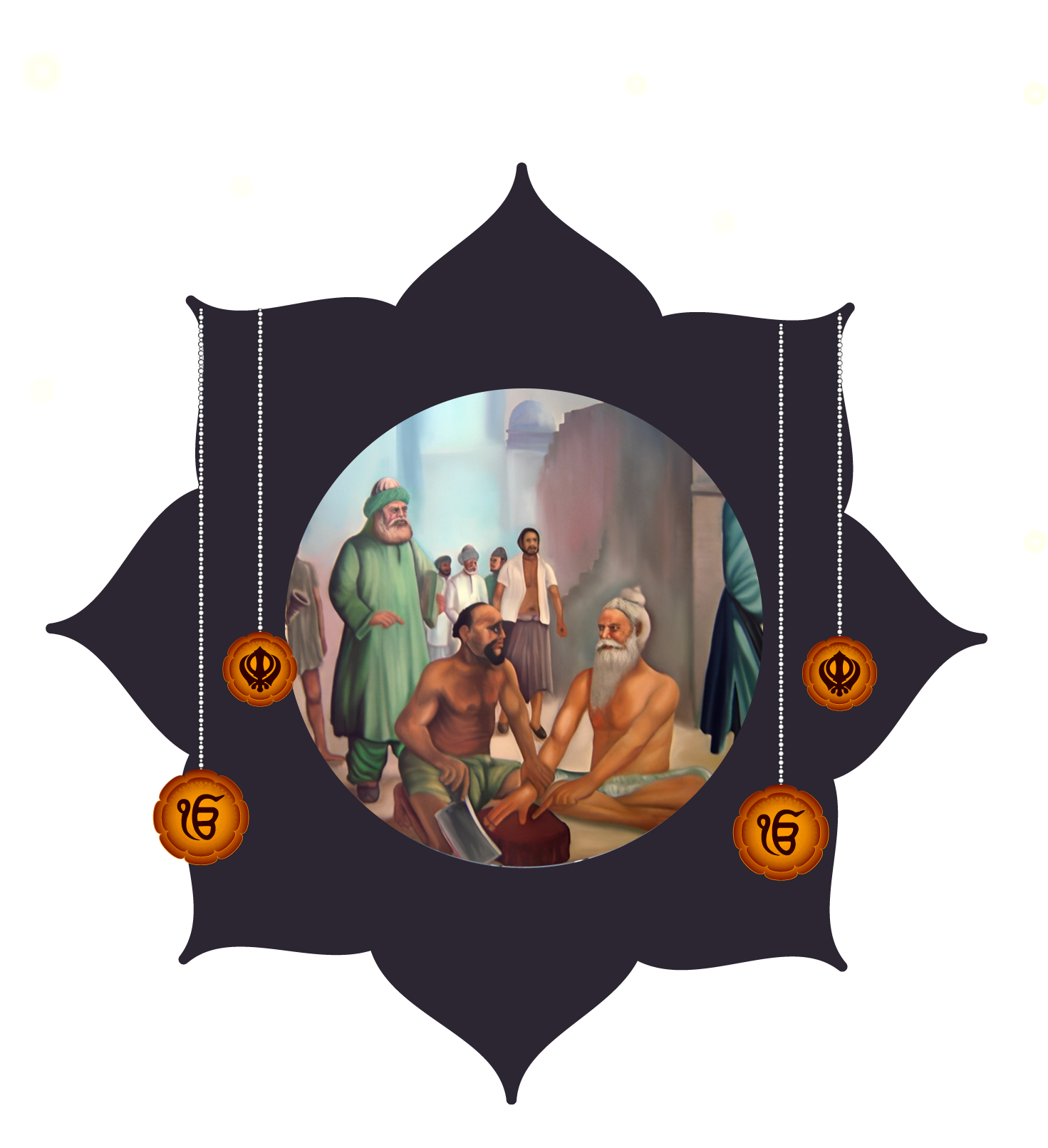
The most famous Sikh intellectual and martyr is Bhai Mani Singh ji. He was a brilliant scholar and a fierce fighter. He truly was a soldier of saints.
On March 10, 1644, Mata Madri Bai ji gave birth to Bhai Mani Singh ji at the home of Bhai Mai Das ji in the Punjab (Pakistan) hamlet of Alipur. At the young age of 13 and with the assistance of his father, Bhai Sahib was lucky enough to catch a sight of Guru Har Rai Ji. He married Seeto Bai ji, the daughter of Lakhi Rai ji when he was 15 years old.
Guru Tegh Bahadur and Guru Harkrishan were both addressed by Bhai Mani Singh. Bhai Mani Singh ji also visited Anandpur Sahib when Guru Tegh Bahadur ji had returned after completing his self-sacrificing job of disseminating the Sikhi word, and he thus became involved in the tremendous Seva of copying and producing little pothis of Gurbani. Bhai Sahib stayed behind with Guru Gobind Singh ji when Guru Tegh Bahadur Sahib ji traveled to Delhi to defend the rights of Hindus and gained martyrdom. In the presence of the tenth master, Bhai Sahib developed into an eminent and well-known scholar.
Mani Ram traveled with Guru Sahib when they left Paunta for Anandpur Sahib on October 27th, 1688. In the Gur Darbar, Mani Ram was second only to Diwan Nand Chand in terms of prominence. He got up early, had a bath, and then dedicated himself to serving others as part of his daily routine. This behavior won him great respect from the Sangat. Mani Ram has a special place in Guru Sahib's heart because of his undying loyalty and commitment. Nadaun Bhai Sahib exhibited outstanding gallantry at the Battle of Bhangani. Guru Patshah bestowed the position of Diwan upon him in recognition of his bravery and dedication to the house of the Guru. On the day of Vaisakhi in 1699, when Guru Gobind Singh ji founded the Khalsa Panth, Bhai Sahib received Amrit and changed his name from Mani Ram to Bhai Mani Singh.
Every day, Bhai Sahib used to give the Sikh congregation at Anandpur Sahib an explanation of the inner meaning and interpretation of Gurbani. Guru Gobind Singh ji selected Bhai Mani Singh ji as the caretaker of Shri Harmandir Sahib at the request of the Sikhs of Amritsar, and Bhai Sahib discoursed about Sikhism upon arriving in Amritsar.
When Guru Gobind Singh ji departed the fort of Shri Anandpur Sahib on the night of December 20–21, 1704, Bhai Mani Singh ji was successful in bringing Mata Sundar Kaur and Mata Sahib Kaur to Delhi. When Guru Gobind Singh ji arrived at Talwandi Sabo following the Battle of Muktsar, he read the present-day Guru Granth Sahib ji from memory, and Bhai Mani Singh ji wrote it down. In this manner, Guru Ji prepared the Damdami Bir and also placed the bani of his father, Guru Tegh Bahadur Ji, inside of it. Later, in Nanded, he bestowed Guruship onto the Damdami Bir.
The Sikh nation was being led by Bhai Mani Singh under his capable leadership and direction as of the year 1721. On Vaisakhi and Diwali, he used to host gatherings of Sikhs so that everyone in the Sikh community could get together and celebrate. Bhai Mani Singh ji asked the governor of Lahore, Zakaria Khan, for permission to celebrate Bandi Chhor Divas at Harmandir Sahib in 1738. He gave the go-ahead but demanded payment of Rs. 5,000. The Governor's attack on Sikhs at the festival was part of a different strategy. The event was reported to the authorities by Bhai Mani Singh ji. Bhai Mani Singh ji's execution was mandated by the government. He was detained and brought in chains to Lahore. He was given the chance to embrace Religion. He was given the order to be dismembered to death for refusing to abandon his ideas and religion.
Bhai Sahib cheerfully embraced martyrdom and declared, "I can give up many lives for Sikhi and Sikhi principles." All Sikhs will forever be motivated by his example to sacrifice everything for their religion. His life serves as a testament to how much he values and respects his beloved Guru.
Inside the Masti Gate, which is located behind the Lahore Fort, is where Bhai Mani Singh was slain. Bhai Mani Singh was born into a devout and committed Gursikh family who were Guru-obsessed. Being Sri Guru Gobind Singh Ji's boyhood companion was an extremely unusual privilege for Bhai Mani Singh.While Sahib-i-Kamal Sri Guru Gobind Singh Ji was there, Bhai Sahib also had the distinction of writing in the revered Sri Guru Granth Sahib. Bhai Mani Singh was chosen by Mata Sundri Ji to serve as a Granthi of Sri Harimandir Sahib in 1721 AD.On the occasion of Bandi Chor Divas, Bhai Mani Singh urged the Sikhs to gather at Sri Harmandir Sahib with the government's permission.
Bhai Sahib delayed the meeting after learning that the government planned to assassinate the Sikhs who were gathered. Bhai Mani Singh was jailed for this crime. Bhai Mani Singh was first persuaded to convert to Islam before being threatened with terrible repercussions, but Bhai Sahib refused to back down and stayed staunch and solid as a Sikh.Bhai Mani Singh was executed here in the year 1724 AD by being hacked down bone by bone, beginning at the tips of the fingers. The Sikhs were also thrown into an ancient well at this location after being killed.
A real saint-soldier, Bhai Mani Singh led a life of unflinching faith, adversity, and sacrifice. He spent 77 years of his 90-year life—all of them—serving the Panth. Bhai Mani Singh's courage, insight, quest of knowledge, and moral integrity had a lasting impression on Sikh history. Although his martyrdom site was vandalized and partially occupied, the Sikh community will always have a high regard for him.